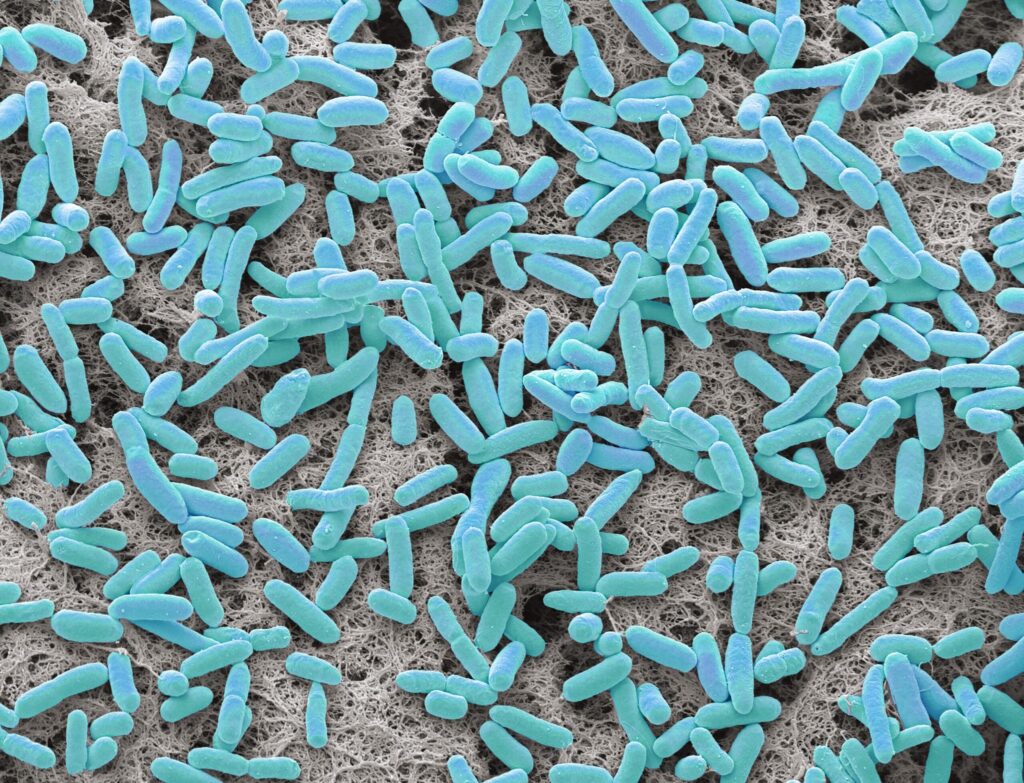Bacteria aren’t just mindless microbes. Research by scientists at the Hebrew University of Jerusalem has revealed that single bacterial cells can carry a “memory” of their past environments—passing it down through generations—before eventually forgetting. Introducing a method called Microcolony-seq that captures microbial memory at the earliest stages of colony growth, the team uncovered hidden subpopulations inside infections, each with different survival strategies. The team says that their observations suggest that bacterial memory may be a widespread phenomenon in both Gram-negative and Gram-positive bacteria.
“What we found is that even a single bacterium carries a long-lasting memory of where it’s been,” said Raya Faigenbaum-Romm, PhD, who is first author of the team’s published paper in Cell. “When it divides, its descendants preserve that memory—sometimes for 20 generations or more.” The finding could explain why antibiotics and vaccines sometimes fail—and may point the way toward more precise treatments.
Faigenbaum-Romm, together with senior author Prof. Nathalie Q. Balaban, PhD, collaborators Profs. Ilan Rosenshine, PhD, and Maskit Bar-Meir, PhD, and colleagues, reported on their findings in a paper titled “Uncovering phenotypic inheritance from single cells with Microcolony-seq,” in which they stated, “Microcolony-seq provides potential targets for the rational design of therapies with the power to simultaneously target the coexisting subpopulations.”
The failure of infectious disease therapy has been associated with the ability of bacterial subpopulations to evade the immune system or antibiotic treatment, the authors wrote. “Thus, a deeper understanding of the phenotypic and genetic variability within an infecting strain is essential for developing effective therapeutic solutions.”
For decades, biologists have known that bacteria, although although genetically identical, often behave differently. Some grow fast, some grow more slowly, some resist antibiotics, while others succumb. But until now, it was unclear which of these differences were fleeting accidents and which represented genuine, heritable states.
Uncovering phenotypic heterogeneity is fundamental to understanding processes such as development and stress responses, the authors wrote. Studies of phenotypic heterogeneity in bacteria have uncovered far-reaching clinical and evolutionary consequences. “Examples include heterogeneity of growth, shown to underlie antibiotic persistence, and heterogeneity in expression of surface structures, which facilitates infection,” the investigators continued.
However, due to the low mRNA abundance in single bacteria, determining biologically relevant heterogeneity remains a challenge. The Microcolony-seq method developed by the team works by isolating tiny colonies that sprout from individual bacteria, analyzing their RNA, genomes, and physical traits. This approach avoids the noise of even recent cutting-edge single-cell RNA sequencing methods, and reveals whether differences between cells are genetic mutations or epigenetically inherited phenotypes. “By combining RNA-seq, whole-genome sequencing (WGS), and phenotypic characterization, Microcolony-seq distinguishes between genetic and phenotypic inheritance,” the scientists explained. “The method takes advantage of the long-term maintenance of the single-bacterium state, not only to analyze its transcriptome but also to combine it with WGS and phenotypic assays on the same subpopulation.”
Using the Microcolony-seq, the team uncovered surprising stabilities. Pathogens such as enteropathogenic Escherichia coli (EPEC) and Staphylococcus aureus were shown to split into stable subpopulations—even within a single infection. Some lineages activated virulence programs that help them cling to host cells, while others switched on genes that favored motility or survival in harsh conditions.
Intriguingly, the study showed that this microbial memory has limits. When bacteria reach “stationary phase”—the point when nutrients are depleted—the memory is erased, effectively resetting the population. “Notably we observe that growth to stationary phase erases the epigenetic inheritance,” the authors stated.
The discoveries carry significant implications for human health. In urinary tract and bloodstream infections, Microcolony-seq revealed co-existing bacterial subgroups with distinct antibiotic resistance or virulence profiles.
Reporting on experiments using Microcolony-seq to investigate microcolonies grown from a sample from a patient with a urinary tract infection, the team said the results indicate that selecting only one susceptible isolate for testing could lead to prescribing a treatment that is ineffective against the patient’s actual infection. A conventional clinical test that samples just one colony could easily miss these hidden players—leading to treatments that fail.
“Therefore, to more accurately determine drug susceptibility, testing multiple colonies from the same patient is recommended,” they wrote. The team also applied Microcolony-seq directly to a blood sample from a patient with acute mecillinam-susceptible S. aureus (MSSA) bacteremia. They reported, “Strikingly, the transcriptomic analysis of the microcolonies revealed three subpopulations with major differences in the expression of virulence factors, accordingly, named VirBSI, IntermediateBSI, and AVIRBSI…The differences in the subpopulations detected in bloodstream bacteremia suggest that therapies targeting factors present in one subpopulation may miss other subpopulations that do not express these factors.”
The researchers’ collective findings may help explain why so many experimental drugs and vaccines against S. aureus infections have stumbled in clinical trials. Such treatments targeted only one part of the bacterial population, leaving others untouched. Balaban explained further, “An infection is rarely a uniform population of bacteria. It’s more like a coalition of different players, each with its own strengths. To design therapies that truly work, we need to understand—and target—all of them.”
As Faigenbaum-Romm also noted, “We’ve been treating bacteria as if they’re all the same, but in reality, even a single cell carries a story of its past. Microcolony-seq lets us finally read that story.” In their paper the authors wrote in summary, “We have shown that Microcolony-seq enables the detection of phenotypes present in infected patient samples that are lost once re-grown in the lab and therefore inaccessible to standard clinical assays.” This knowledge, they suggested, “…provides a transformative framework for understanding pathogen heterogeneity and paves the way for the development of more precise, effective, and comprehensive therapeutic strategies.”
Beyond immediate medical relevance, Microcolony-seq opens new avenues for exploring microbial life. It provides a systematic way to study how bacteria diversify, hedge their bets, and adapt in real time. Future applications could extend to fungal pathogens, the gut microbiome, and even industrial fermentation. “By providing a global landscape of genetic and phenotypic heterogeneity and its phenotypic consequences, Microcolony-seq allows for the systematic identification and characterization of inherited phenotypes without the need for genetic manipulations,” the authors stated. “Our method should pave the way for detecting many more differentiation strategies used by colony-forming organisms, including fungal pathogens.”


